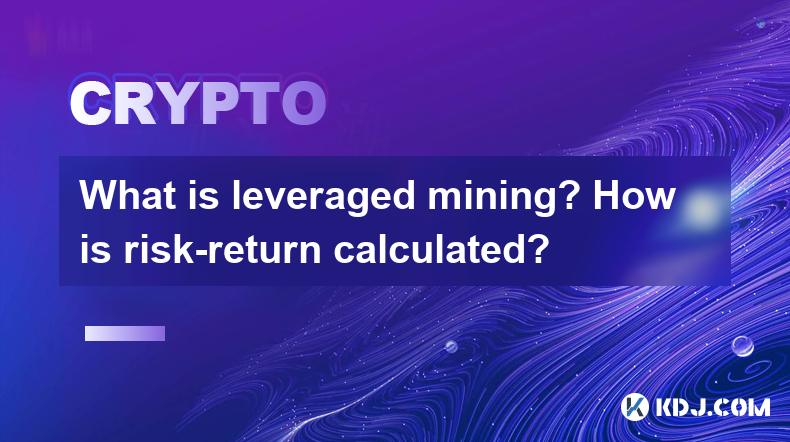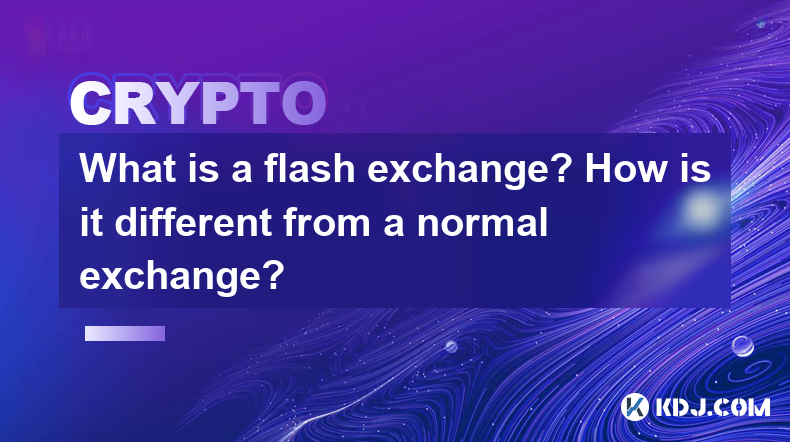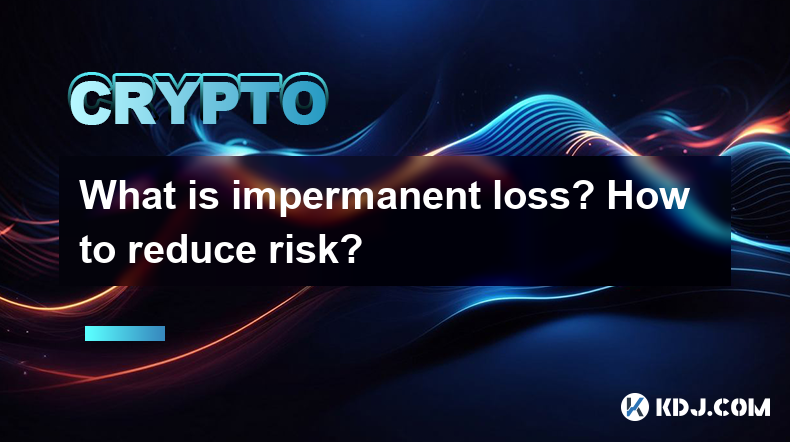-
 Bitcoin
Bitcoin $84,825.3915
0.52% -
 Ethereum
Ethereum $1,582.2327
-0.21% -
 Tether USDt
Tether USDt $1.0001
0.02% -
 XRP
XRP $2.0656
-1.54% -
 BNB
BNB $589.9455
0.88% -
 Solana
Solana $133.9496
1.43% -
 USDC
USDC $0.9999
0.00% -
 TRON
TRON $0.2479
-0.36% -
 Dogecoin
Dogecoin $0.1555
-0.20% -
 Cardano
Cardano $0.6175
0.41% -
 UNUS SED LEO
UNUS SED LEO $9.0832
-3.49% -
 Chainlink
Chainlink $12.5115
0.61% -
 Avalanche
Avalanche $18.9560
0.46% -
 Stellar
Stellar $0.2400
1.29% -
 Toncoin
Toncoin $2.9393
0.62% -
 Shiba Inu
Shiba Inu $0.0...01177
-1.18% -
 Hedera
Hedera $0.1628
2.73% -
 Sui
Sui $2.1134
2.00% -
 Bitcoin Cash
Bitcoin Cash $335.3516
3.15% -
 Polkadot
Polkadot $3.6149
0.86% -
 Hyperliquid
Hyperliquid $16.9911
5.02% -
 Litecoin
Litecoin $74.8009
0.00% -
 Dai
Dai $1.0000
0.00% -
 Bitget Token
Bitget Token $4.3705
1.23% -
 Ethena USDe
Ethena USDe $0.9992
0.00% -
 Pi
Pi $0.6162
1.25% -
 Monero
Monero $216.3039
-0.80% -
 Uniswap
Uniswap $5.1643
-0.28% -
 Pepe
Pepe $0.0...07226
0.11% -
 OKB
OKB $50.4685
-2.19%
One article to fully understand what AAVE coin is, the characteristics of AAVE coin and future development trends
AAVE coin, the native token of the Aave DeFi lending platform, offers users the ability to borrow and lend cryptocurrencies without intermediaries and earn interest on their holdings.
Oct 04, 2024 at 01:18 pm

A Comprehensive Guide to AAVE Coin: Understanding Its Features and Future Prospects
1. What is AAVE Coin?
AAVE coin (AAVE) is the native token of the Aave decentralized finance (DeFi) lending platform. It enables users to borrow and lend cryptocurrencies without intermediaries, thereby facilitating the efficient allocation of crypto assets.
2. Key Characteristics of AAVE Coin:
- Collateralization: Borrowers must provide collateral to secure their loans, ensuring risk mitigation.
- Undercollateralization: AAVE allows for undercollateralization, enabling borrowers to access funds without fully backing their loans.
- Interest Rate Fluctuation: Interest rates on AAVE loans fluctuate based on supply and demand, allowing borrowers and lenders to adjust their rates.
- Lending Pool: AAVE operates a decentralized lending pool where users can deposit and borrow various cryptocurrencies.
- Governance: AAVE holders can participate in the platform's governance by casting votes on proposals that affect the protocol's future.
3. Benefits of Using AAVE Coin:
- Earn interest on cryptocurrency: Depositors can earn interest on their crypto holdings by lending them through Aave.
- Borrow crypto at competitive rates: Borrowers can access crypto loans with flexible terms and competitive interest rates.
- Participate in governance: AAVE holders have a say in the platform's development and direction.
- Leverage crypto holdings: Undercollateralization allows users to amplify their returns by leveraging their crypto holdings.
4. Future Development Trends for AAVE Coin:
- Increased Adoption: As the DeFi industry grows, AAVE is expected to witness increased adoption as a leading lending platform.
- Interoperability: Aave is exploring integrations with other DeFi protocols to enhance its functionality and expand its ecosystem.
- Regulatory Framework: The regulatory landscape for DeFi is evolving, and AAVE is actively engaging with regulators to ensure compliance and foster industry growth.
- Stablecoin Integration: Aave is exploring the integration of stablecoins, such as USDC and DAI, to provide borrowers with more stable loan options.
5. Conclusion:
AAVE coin is a vital part of the Aave DeFi ecosystem, facilitating efficient lending and borrowing of cryptocurrencies. Its unique characteristics, such as collateralization and governance, make it an attractive proposition for both lenders and borrowers. With its strong fundamentals and future development prospects, AAVE coin is well-positioned to play a significant role in the growing DeFi industry.
Disclaimer:info@kdj.com
The information provided is not trading advice. kdj.com does not assume any responsibility for any investments made based on the information provided in this article. Cryptocurrencies are highly volatile and it is highly recommended that you invest with caution after thorough research!
If you believe that the content used on this website infringes your copyright, please contact us immediately (info@kdj.com) and we will delete it promptly.
- Binance Coin (BNB) Could Be on the Verge of a Major Price Movement as Attention Turns to Its Upcoming Debut on Kraken
- 2025-04-18 07:25:14
- a16z Crypto Doubles Down on LayerZero, Acquiring an Additional $55M Worth of ZRO Tokens
- 2025-04-18 07:25:14
- CARDANO: SLOW CLIMB OR STALLED MOMENTUM?
- 2025-04-18 07:20:12
- Crypto markets face a busy schedule of token unlocks this week, putting traders on alert
- 2025-04-18 07:20:12
- Cryptocurrencies Are Trading Slightly Up on Thursday as Traditional Financial Markets Closed Out a Low-Volatility Week.
- 2025-04-18 07:15:13
- Bitwise Announces the Listing of Four of Its Crypto ETPs on the London Stock Exchange (LSE)
- 2025-04-18 07:15:13
Related knowledge

What is impermanent loss insurance? What are the solutions?
Apr 12,2025 at 01:14am
What is Impermanent Loss Insurance? What are the Solutions? Impermanent loss is a significant concern for liquidity providers in decentralized finance (DeFi) platforms. It occurs when the price of tokens in a liquidity pool changes compared to when they were deposited, leading to a potential loss if the provider decides to withdraw their liquidity. To m...

What are algorithmic stablecoins? How do they maintain anchoring?
Apr 12,2025 at 11:35am
Algorithmic stablecoins represent a fascinating and innovative segment within the cryptocurrency ecosystem. These digital assets are designed to maintain a stable value, typically pegged to a fiat currency like the US dollar, through the use of algorithms rather than traditional collateral. This approach distinguishes them from other types of stablecoin...

What is leveraged mining? How is risk-return calculated?
Apr 11,2025 at 04:07pm
What is Leveraged Mining? How is Risk-Return Calculated? Leveraged mining is a strategy used in the cryptocurrency space where miners borrow funds to increase their mining capacity and potential returns. This approach can amplify both profits and losses, making it a high-risk, high-reward endeavor. Understanding how to calculate the risk and return asso...

What is an aggregator? How does 1inch optimize transaction paths?
Apr 12,2025 at 05:00pm
An aggregator in the cryptocurrency space is a tool that compiles and compares data from multiple decentralized exchanges (DEXs) to find the best possible trading routes and prices for users. Aggregators are essential for traders looking to optimize their transactions, as they can automatically search through various liquidity sources to ensure the most...

What is a flash exchange? How is it different from a normal exchange?
Apr 16,2025 at 03:43pm
A flash exchange, also known as a flash swap, is a relatively new concept within the cryptocurrency space that has gained significant attention due to its innovative approach to trading. Unlike traditional exchanges, flash exchanges leverage the power of decentralized finance (DeFi) protocols to enable instant, collateral-free trades. In this article, w...

What is impermanent loss? How to reduce risk?
Apr 16,2025 at 11:14pm
What is Impermanent Loss? How to Reduce Risk? Impermanent loss is a term that frequently surfaces in the world of decentralized finance (DeFi), particularly when discussing liquidity provision on automated market makers (AMMs) like Uniswap or SushiSwap. Understanding this concept is crucial for anyone looking to engage in liquidity provision, as it dire...

What is impermanent loss insurance? What are the solutions?
Apr 12,2025 at 01:14am
What is Impermanent Loss Insurance? What are the Solutions? Impermanent loss is a significant concern for liquidity providers in decentralized finance (DeFi) platforms. It occurs when the price of tokens in a liquidity pool changes compared to when they were deposited, leading to a potential loss if the provider decides to withdraw their liquidity. To m...

What are algorithmic stablecoins? How do they maintain anchoring?
Apr 12,2025 at 11:35am
Algorithmic stablecoins represent a fascinating and innovative segment within the cryptocurrency ecosystem. These digital assets are designed to maintain a stable value, typically pegged to a fiat currency like the US dollar, through the use of algorithms rather than traditional collateral. This approach distinguishes them from other types of stablecoin...

What is leveraged mining? How is risk-return calculated?
Apr 11,2025 at 04:07pm
What is Leveraged Mining? How is Risk-Return Calculated? Leveraged mining is a strategy used in the cryptocurrency space where miners borrow funds to increase their mining capacity and potential returns. This approach can amplify both profits and losses, making it a high-risk, high-reward endeavor. Understanding how to calculate the risk and return asso...

What is an aggregator? How does 1inch optimize transaction paths?
Apr 12,2025 at 05:00pm
An aggregator in the cryptocurrency space is a tool that compiles and compares data from multiple decentralized exchanges (DEXs) to find the best possible trading routes and prices for users. Aggregators are essential for traders looking to optimize their transactions, as they can automatically search through various liquidity sources to ensure the most...

What is a flash exchange? How is it different from a normal exchange?
Apr 16,2025 at 03:43pm
A flash exchange, also known as a flash swap, is a relatively new concept within the cryptocurrency space that has gained significant attention due to its innovative approach to trading. Unlike traditional exchanges, flash exchanges leverage the power of decentralized finance (DeFi) protocols to enable instant, collateral-free trades. In this article, w...

What is impermanent loss? How to reduce risk?
Apr 16,2025 at 11:14pm
What is Impermanent Loss? How to Reduce Risk? Impermanent loss is a term that frequently surfaces in the world of decentralized finance (DeFi), particularly when discussing liquidity provision on automated market makers (AMMs) like Uniswap or SushiSwap. Understanding this concept is crucial for anyone looking to engage in liquidity provision, as it dire...
See all articles
























































































